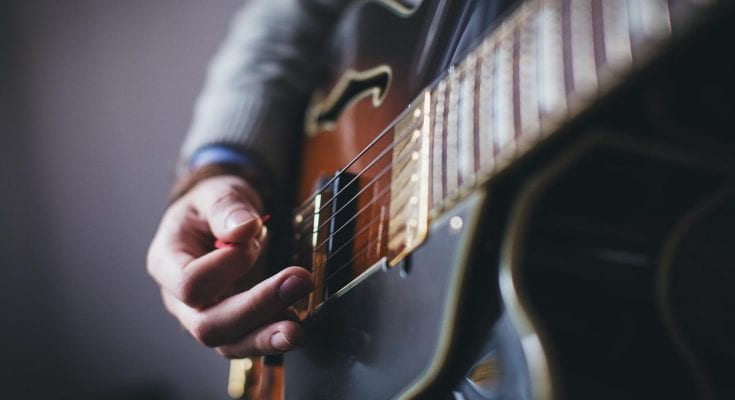Buy Guitar Picks – Lowest Prices
If you want to play guitar like Adam Jones from Tool or someone supporting famous artists like Post Malone and Lizzo, then you need to find out how to properly hold a guitar pick.
Guitar Lessons by an instructor can be very expensive and if you re having problems immediately, it can be downright frustrating. If you want to learn to play guitar fast, then there are many other options that you can try out. One of those options is the guitar video courses. A guitar video course can help you learn how to play guitar fast in a short amount of time. You do not need a professional to teach you how to play guitar, so you will not be stuck in the same routines for days or weeks on end. In this post, you will learn about learning how to hold guitar pick, how to play guitar scales, and how to learn to play popular songs.
When you are learning how to hold the guitar pick correctly, it is much easier to learn simple chords. Hold the guitar with your thumb and fingers, using the guitar strap that goes across the top of the fretboard. Instead of placing your finger at the center of the fretboard like most beginners do, place the thumb flat against the pick, covering three strings. By doing this, you will be able to get the most benefit out of practicing chords TBH.
You can practice strumming by using the index and middle fingers of each hand. It is also very important to make sure your right hand is in proper shape. You want to be able to play guitar scales by using the shape of your thumb, which is similar to the shape of your index finger. So if you place your thumb flat against the pick, it will make it easier for you to play guitar scales. Once you learn how to hold the guitar properly, it will be easier for you to learn how to play guitar quickly and create amazing music like Tyler the Creator and Billie Eilish do.
How to learn to play guitar fast means first learning to properly strum the strings. Playing chords on a clean guitar will help achieve this, as playing chords that are dirty or grimy will only serve to make it more difficult to play chords cleanly. If you want to play guitar quickly, then use guitar picks that are made of steel or aluminum. Playing on plastic picks will slow you down, so the steel or aluminum ones will be a better option. Playing on these types of picks will help keep your playing smooth and allow you to play chords with confidence.
After strumming each chord, play a scale over the top of the plectrum. As you practice, slowly move up the scale using the plectrum. This will help you develop a sense of ease when playing the guitar – once you can play chords with confidence, playing some scales will come naturally. Also, the heavier your plectrum is, the further you will be able to stretch the strings and strike a good chord. The lighter your plectrum, the further you must stretch the strings, and the further you must hit the guitar pick to hit a good chord.
These three basic numbering systems will go a long way in helping you learn how to hold the guitar. Learning how to hold the guitar is essential to learning how to play guitar well. Good guitar players have a strong grip on the instrument, using their thumb, fingers and palms to hold the instrument tightly. For new guitar players, I would recommend holding the guitar at about halfway between the bridge and the fret board, using the index finger. Holding the guitar correctly will make it easier to move and play, plus it will help prevent injury.
A guitar pick is a light, curved, small tool used to pluck or strike a stringed musical instrument. For most hand-held musical instruments including guitars and mandolin, the guitar pick is usually called picks and is actually a separate instrument held in the fingers of the player. In classical music, plectrums are used instead of picks, but in rock guitar, a plectrum (also known as a drone) is typically used instead of a pick. In most cases, a guitar pick has a finger-holes that allow you to place your fingers inside the hole so that you can play notes. Plectrums are not the only instruments used as picks; other instruments, such as the tremolo on the bass guitar and the tapping plate on the piano, are also commonly used as picks.
It is important to know how to make a guitar pick because playing good guitar leads require precision control of the timing of plucking and striking strings. To produce a rich, warm sound that peaks at the end of the scale, you must be able to hit your strings with the right timing and volume. The thickness and texture of the sound will vary depending on the texture of your fingers and the hardness of your guitar pick. Strings are usually tuned using hammers or wooden bars that have been placed on the strings. When you are learning to play, concentrating hard on the right notes helps you achieve a nice consistent tone.
There are six guitar pick shapes. These include the half-string, single-strand, triangle, tenth-string, compound/quatzel, and hammer-head. Half-string guitar pick shapes are used for picking up single-strand chords. The triangle shape produces a dark tone. The single-strand shape produces a light tone, similar to that of the acoustic guitar pick.
The ten-string is shaped in a conical shape, which is the most common shape for strumming. The pattern of the pick is similar to the single-string, but it produces a smoother tone. Compound picks combine the characteristics of both the single-string and the ten-string, resulting in a lighter touch and a warmer sound.
Finally, there are hammer-heads, which are the most rarefied of the six types of picks. Hammer-heads are the absolute least expensive, but they also offer very little versatility. Some guitarists like to use hammer-heads with a little bit of a curve to produce a slightly varied sound. Hammer-heads are made from a combination of tapered and straight wood, so many guitarists prefer this type over many thin picks.
There are other kinds of picks, including compound picks and flat picks, but these three give you a starting point. After you learn how to control the amount of light that passes through the pick, you’ll want to find a model that can handle playing chords at various octaves of the scale. You can experiment with all types of picks, but you should also spend some time practicing acoustic guitar strumming chords. If you can master playing chords without trying to hold down on the strings, you’ll be ready to move on to lead guitar.



